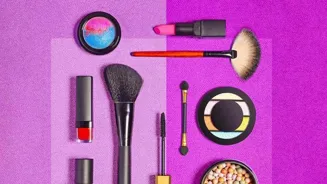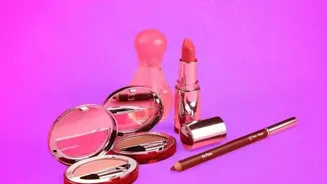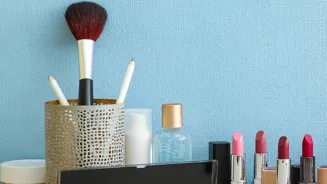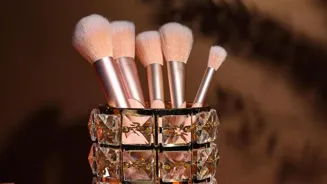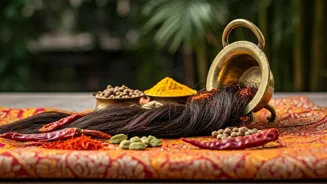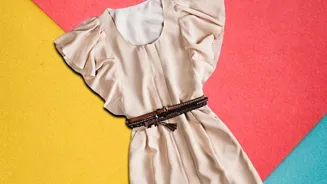Exploring the Evolution of Beauty Standards in India: A Journey Through Decades. Dive into 10 transformative shifts!
Beauty, as they say, lies in the eye of the beholder. But what happens when the "eye"
itself changes? Beauty standards, that elusive and ever-shifting concept, have never been static. What was considered desirable in one decade might be completely out of fashion in the next.
In India, these changes are especially fascinating, reflecting a complex interplay of global trends and deeply rooted cultural values. From the demure homemakers of the mid-20th century to the confident, self-assured individuals of today, the ideal of beauty has undergone a dramatic transformation.
Let's take a look at ten significant shifts that have shaped the evolution of beauty standards in India over the decades.
Post-independence era in India: rise of "Bharatiya Nari" embodying traditional values and beauty
The post-independence era in India saw the rise of the "Bharatiya Nari" – a woman embodying traditional values, grace, and simplicity. Beauty was closely tied to modesty and domesticity. Think of iconic actresses like Nutan and Meena Kumari.
Their beauty was defined by their soft features, demure demeanour, and traditional attire. Fair skin was (and sadly, to some extent, still is) considered desirable, but overall, the emphasis was on inner beauty and character.
Makeup was minimal, often limited to kohl-lined eyes, a subtle bindi, and perhaps a touch of lipstick. Hairstyles were typically long and braided, or neatly tied in a bun adorned with flowers. The ideal woman was seen as someone who upheld tradition and contributed to the family unit.
This era emphasized natural beauty and a simple lifestyle, where the essence was captured through soft features, traditional attire, and gentle expressions.
1970s Bollywood redefined fashion with bold styles challenging norms
The 1970s brought a wave of Bollywood influence and a departure from the demure image of the previous decades. Actresses like Zeenat Aman and Parveen Babi challenged conventional norms with their Western-inspired fashion and bolder makeup choices.
The bell-bottoms, bouffant hairstyles, and winged eyeliner became synonymous with the era. While fair skin remained a preference, there was a growing appreciation for other skin tones. The focus shifted towards a more individualistic and glamorous look.
This was when women started taking initiatives to stand differently through their appearances. This era brought a bold twist – a fusion of Bollywood charm and experimental trends.
1980s India: rise of working women, power dressing, bold makeup, confident beauty ideals
The 1980s in India saw the rise of the working woman, and beauty standards reflected this newfound confidence and ambition. Women embraced power dressing, with structured clothing, bold colours, and statement jewellery.
Makeup became more dramatic, with colourful eyeshadows, defined brows, and strong lip colours. Actresses like Rekha and Sridevi epitomized this era, showcasing a blend of traditional and modern styles. Permed hair and big, voluminous hairstyles were all the rage.
Strength and confidence became key elements of the beauty ideal, showcasing the working class.
Indian beauty redefined globally in 1990s by Sushmita Sen and Aishwarya Rai
The 1990s were a watershed moment for Indian beauty on the global stage. Sushmita Sen and Aishwarya Rai winning international beauty pageants put India on the map and redefined beauty ideals. Suddenly, tall, slender figures, flawless complexions, and articulate personalities became highly desirable.
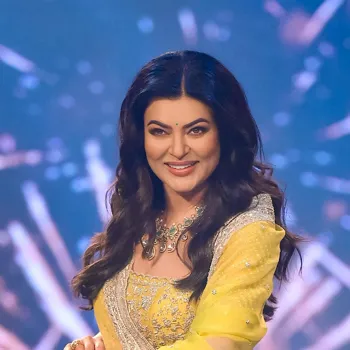
The emphasis shifted towards a more Westernized look, with a focus on physical perfection and poise. This created a surge in the demand for beauty products and cosmetic procedures.
It was a time when women embraced globalization, leading to a blend of traditional and modern styles, setting new benchmarks in the realm of beauty.
Early 2000s shifted to natural beauty and casual style
The early 2000s saw a slight shift away from the overtly glamorous image of the 1990s. Actresses like Preity Zinta and Rani Mukerji embodied the "girl next door" image, with their relatable personalities and natural beauty.
While fair skin remained a preference, there was a greater acceptance of diverse body types and skin tones. The focus shifted towards a more casual and effortless style.
Social media changed beauty standards, promoted diversity, self-care
The rise of social media and the internet in the 2010s brought about a major shift in beauty standards. The influence of bloggers, vloggers, and Instagram influencers became significant.
This era also witnessed the rise of the body positivity movement, which challenged traditional notions of beauty and celebrated diversity. Women started embracing their natural features, flaws and all.
There was a growing emphasis on self-care, wellness, and mental health, recognizing that true beauty comes from within.
Era of inclusivity and self-expression in beauty
The present era is marked by inclusivity and self-expression. Beauty is no longer confined to a single definition. People are encouraged to embrace their individuality and express themselves through fashion, makeup, and hairstyles.
Inclusivity in the beauty sector, which also includes various products for all skin types (including those with skin problems), allows people feel like they all belong. This era empowers everyone to challenge conventional norms and celebrate their uniqueness.
